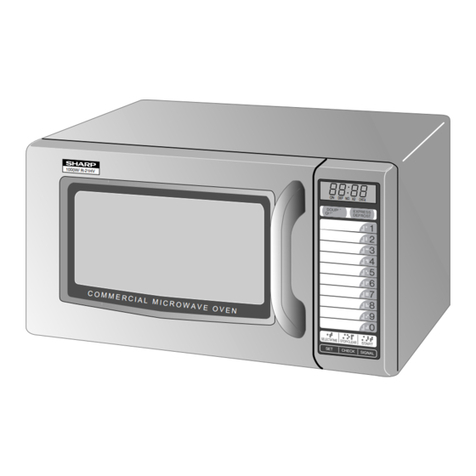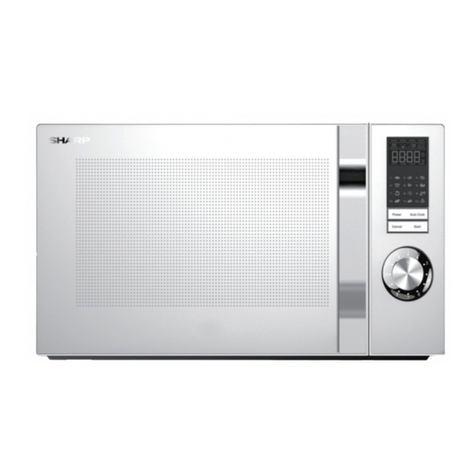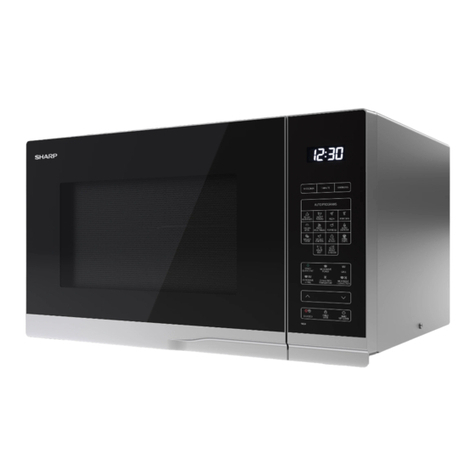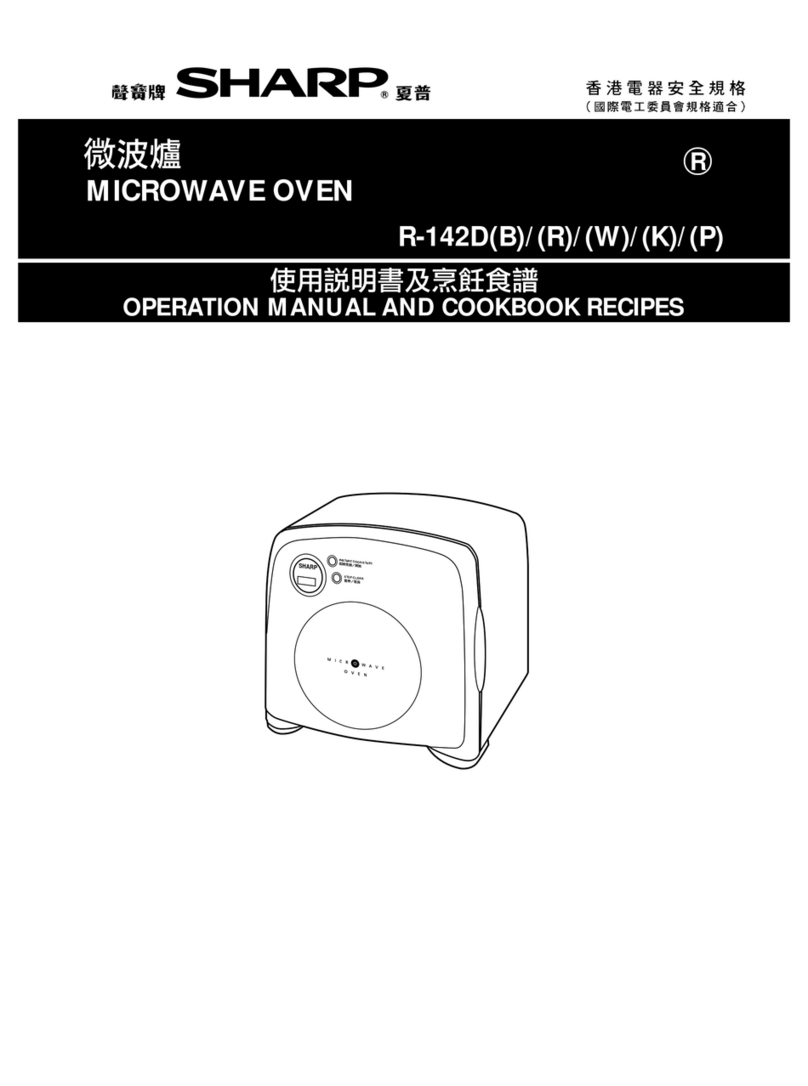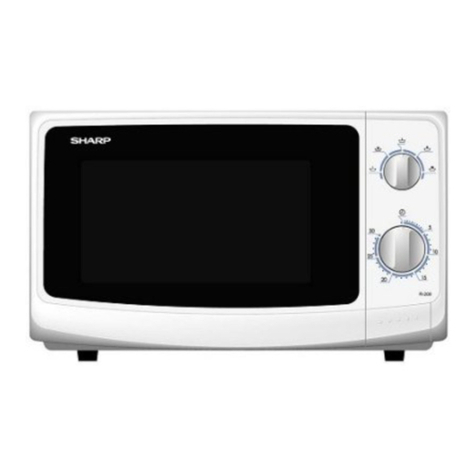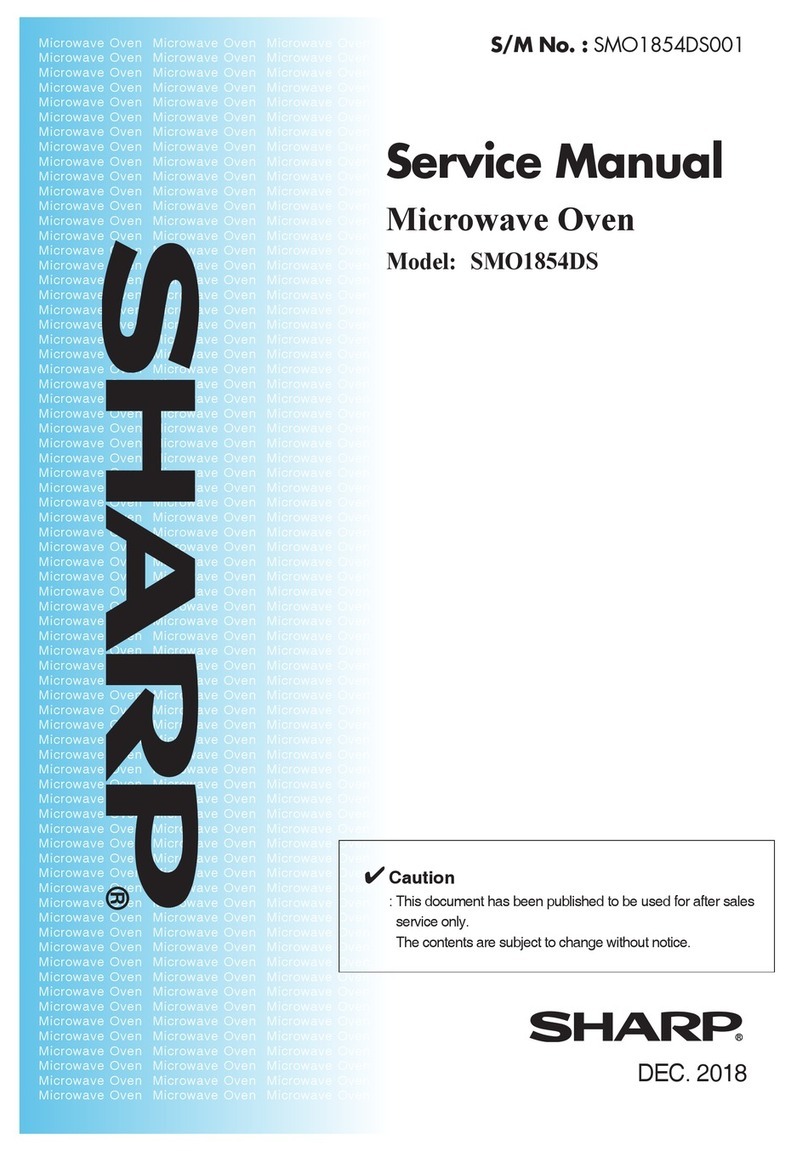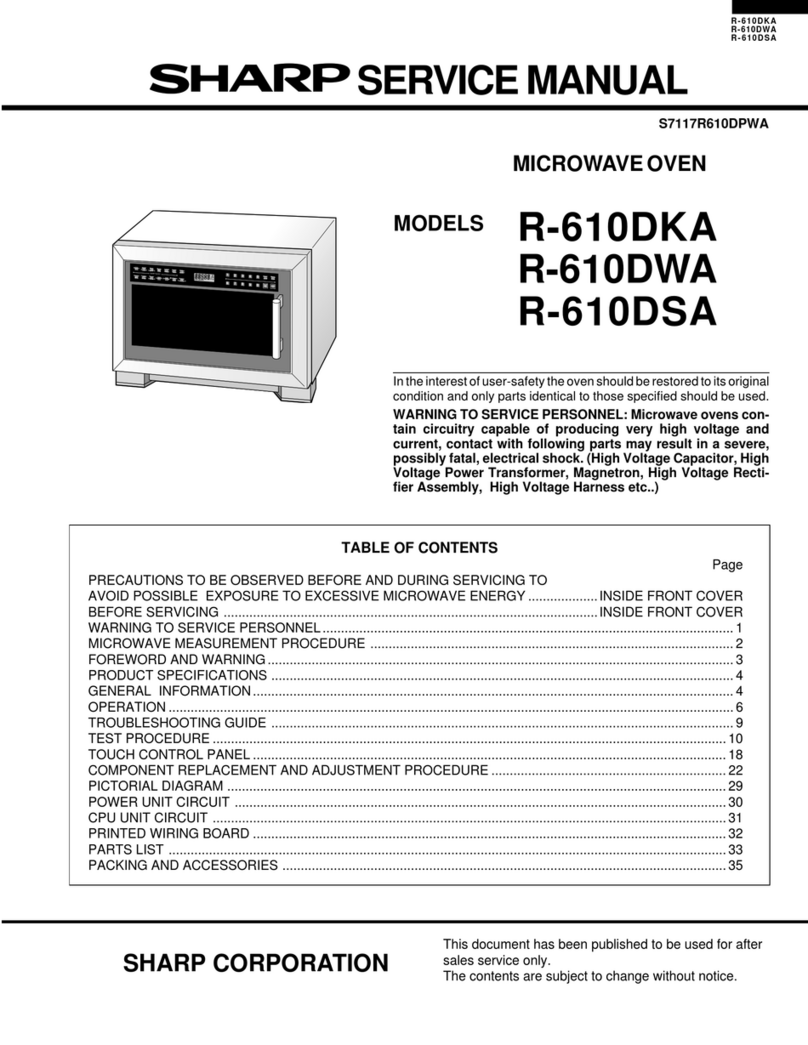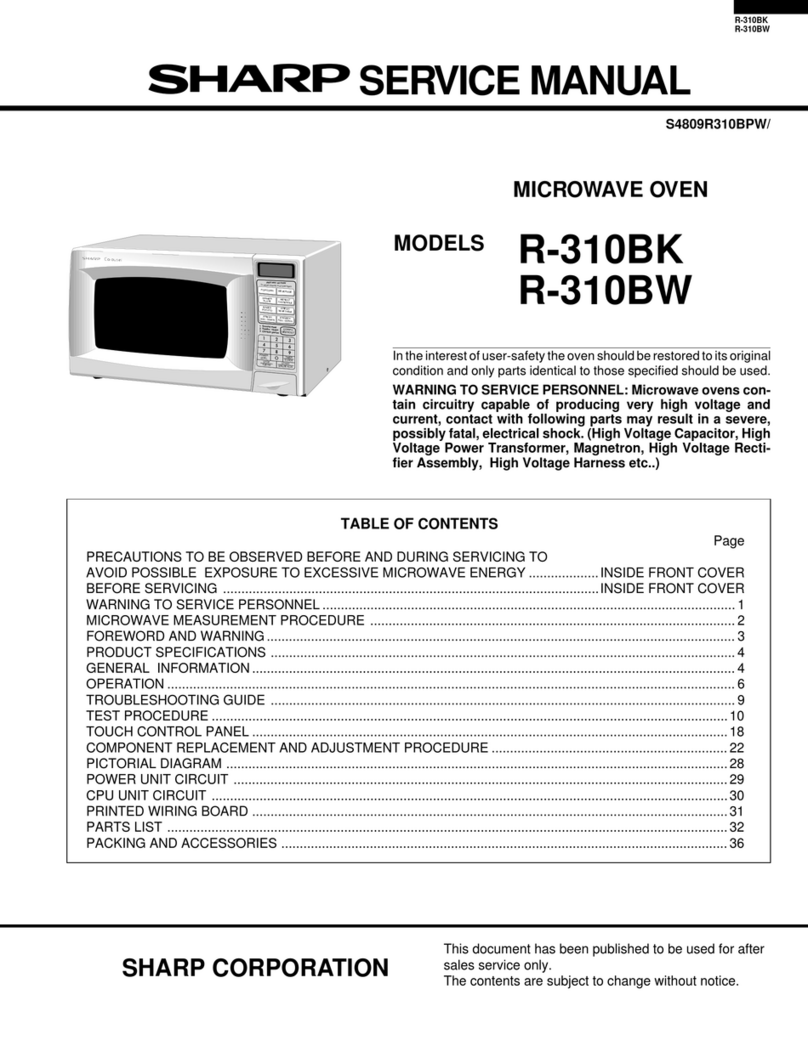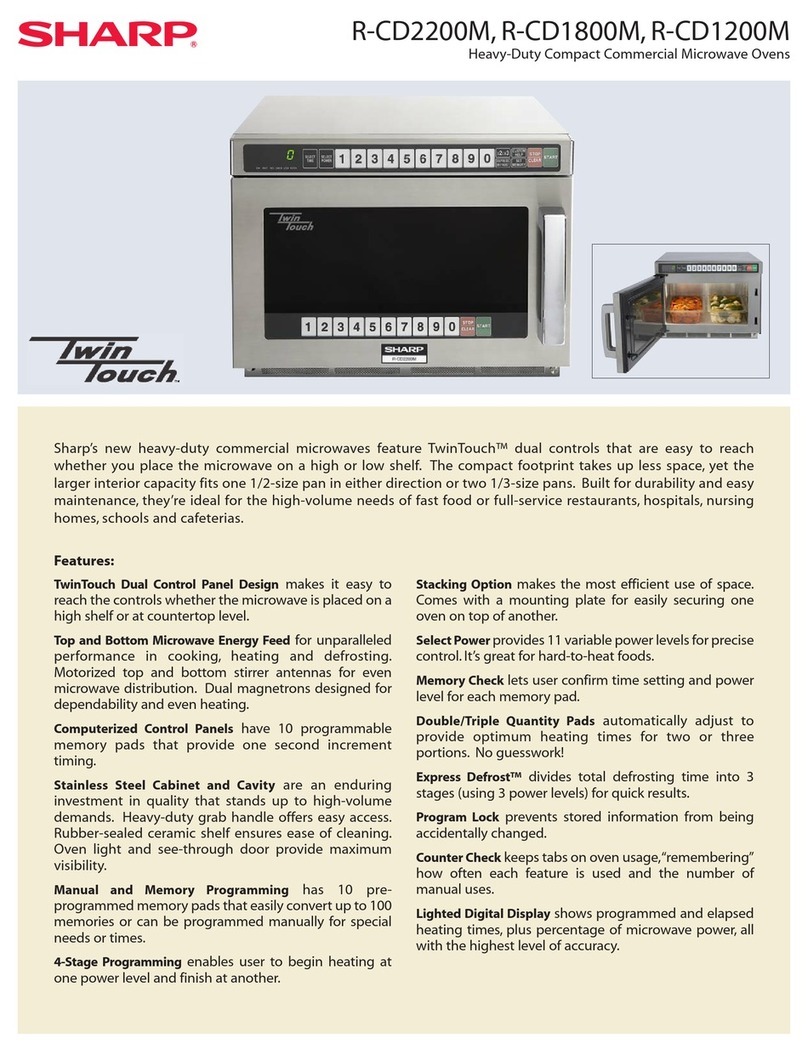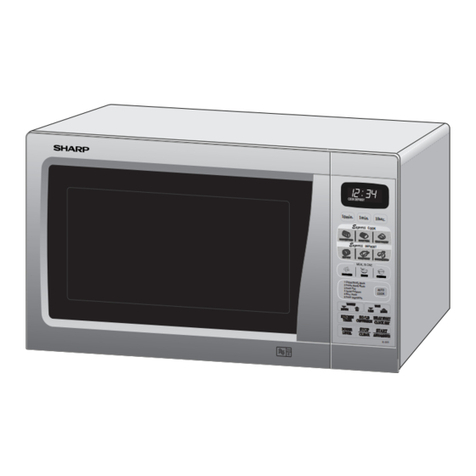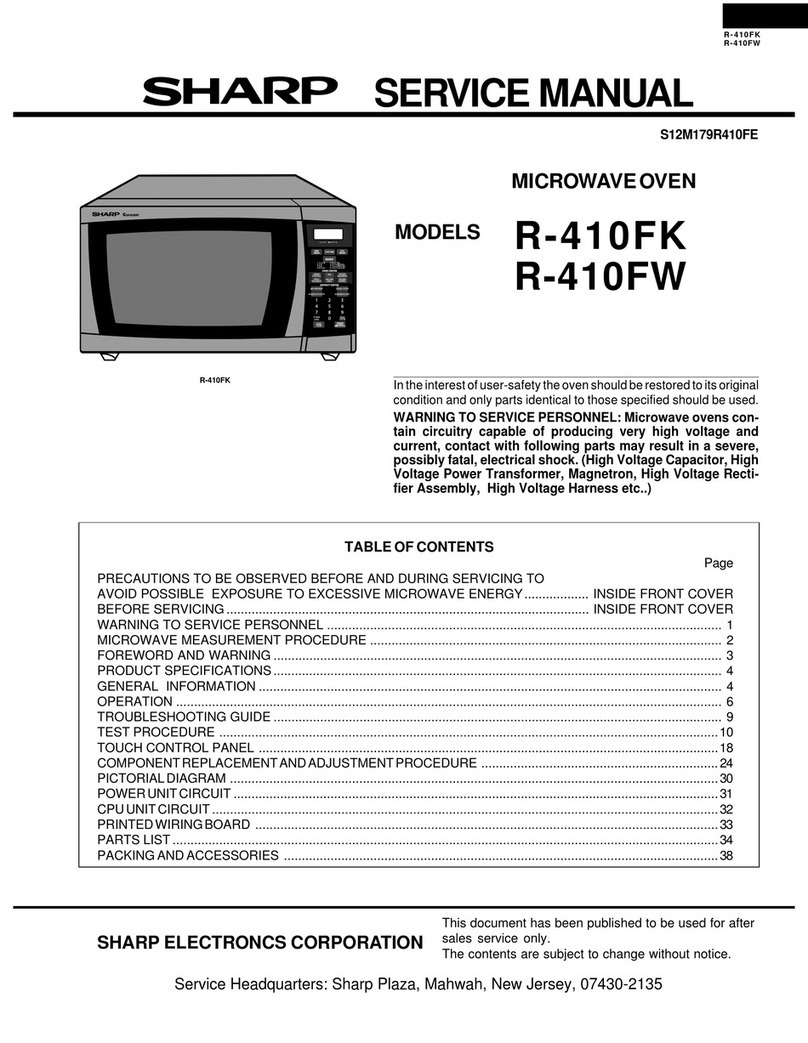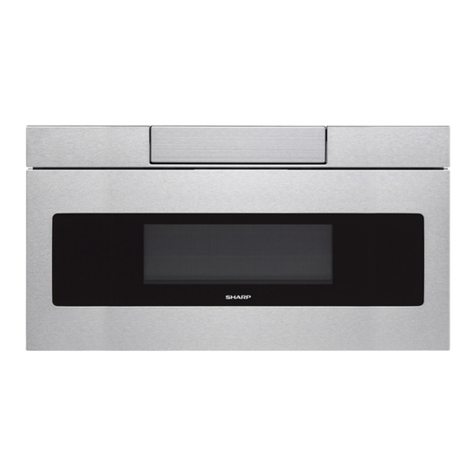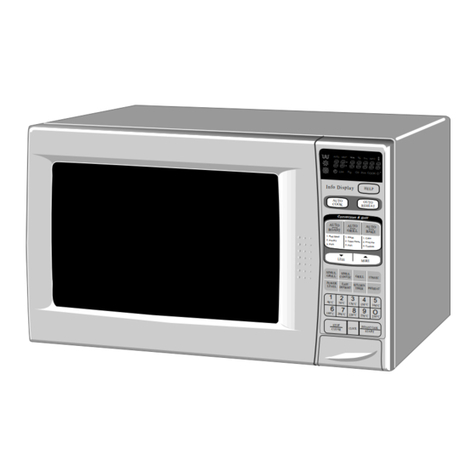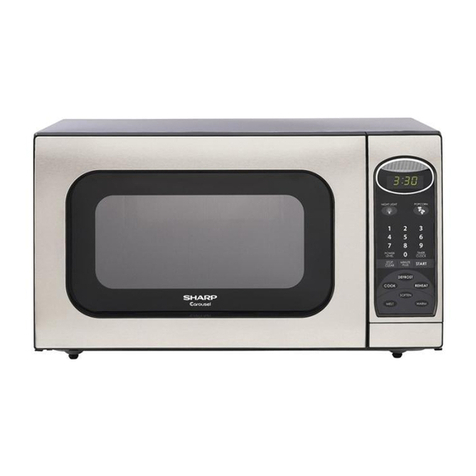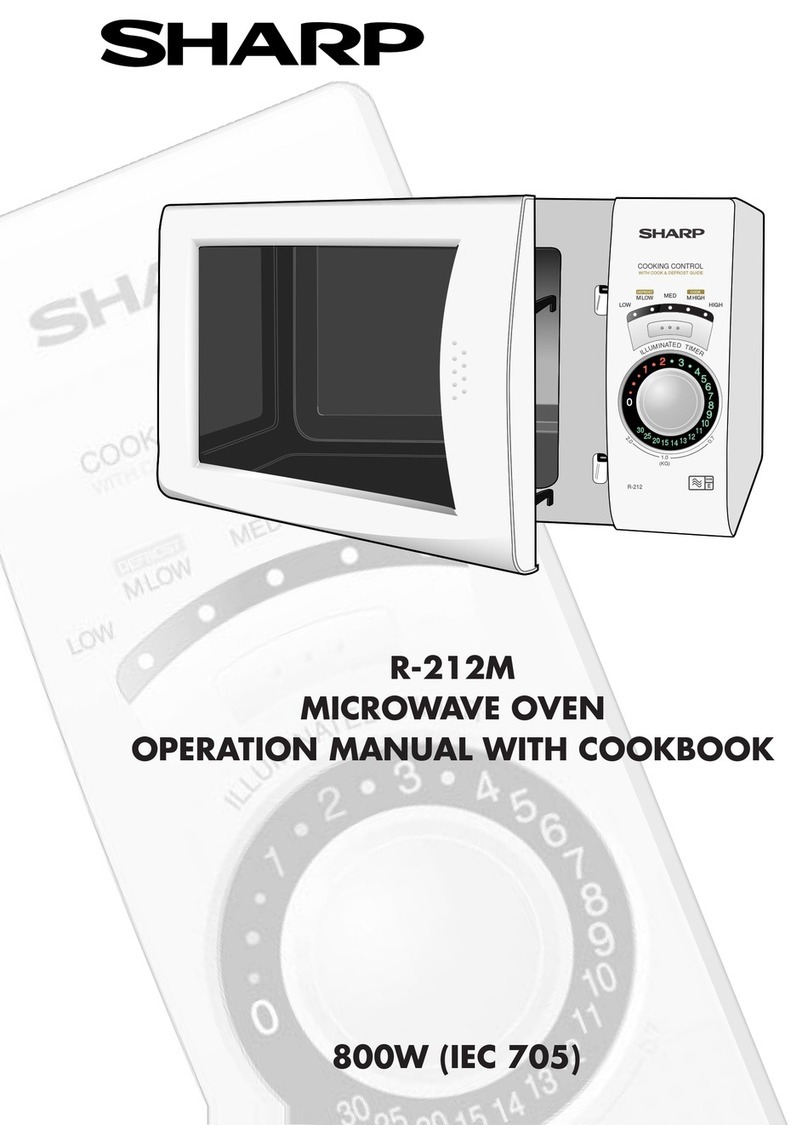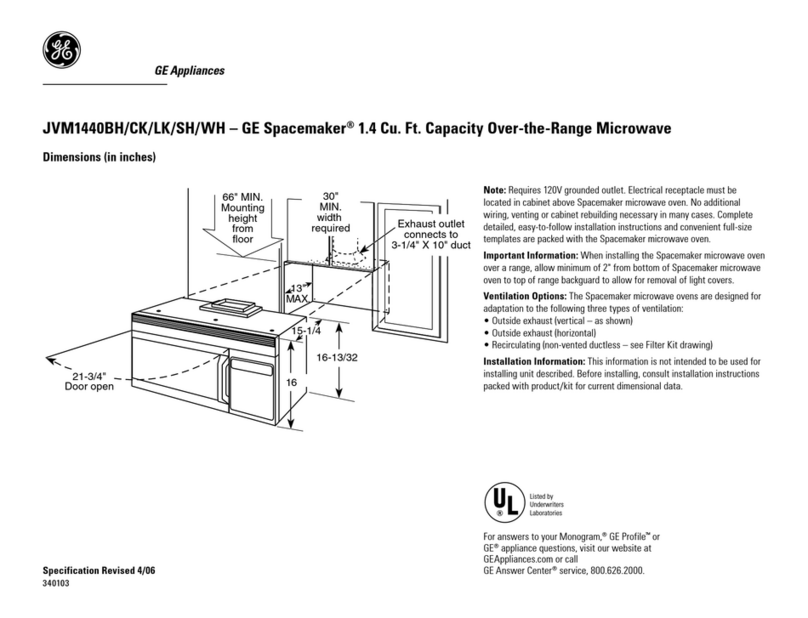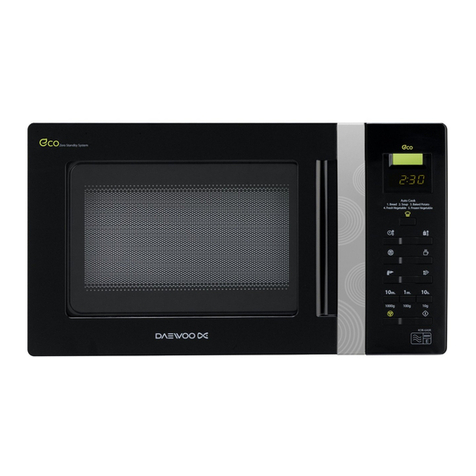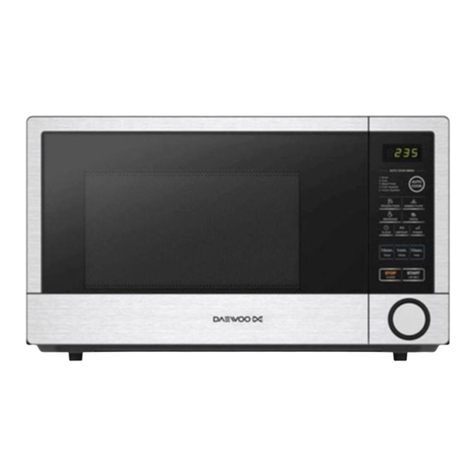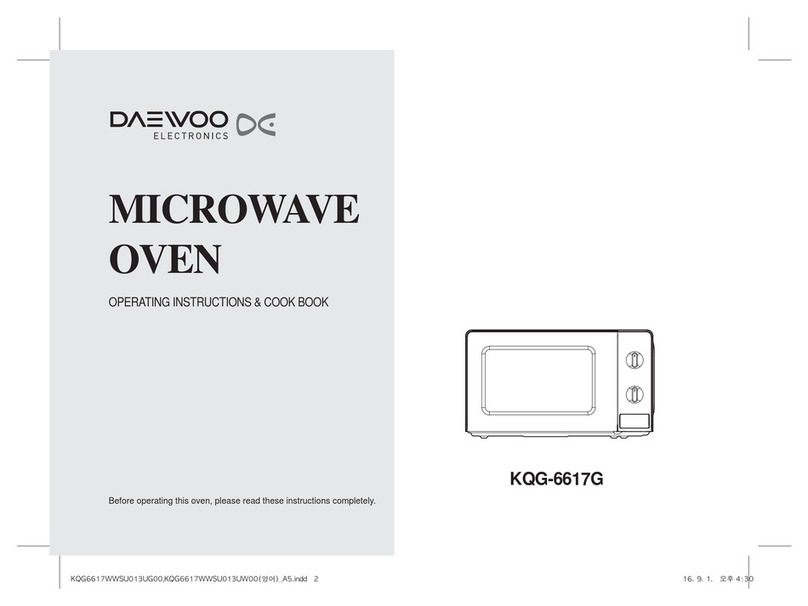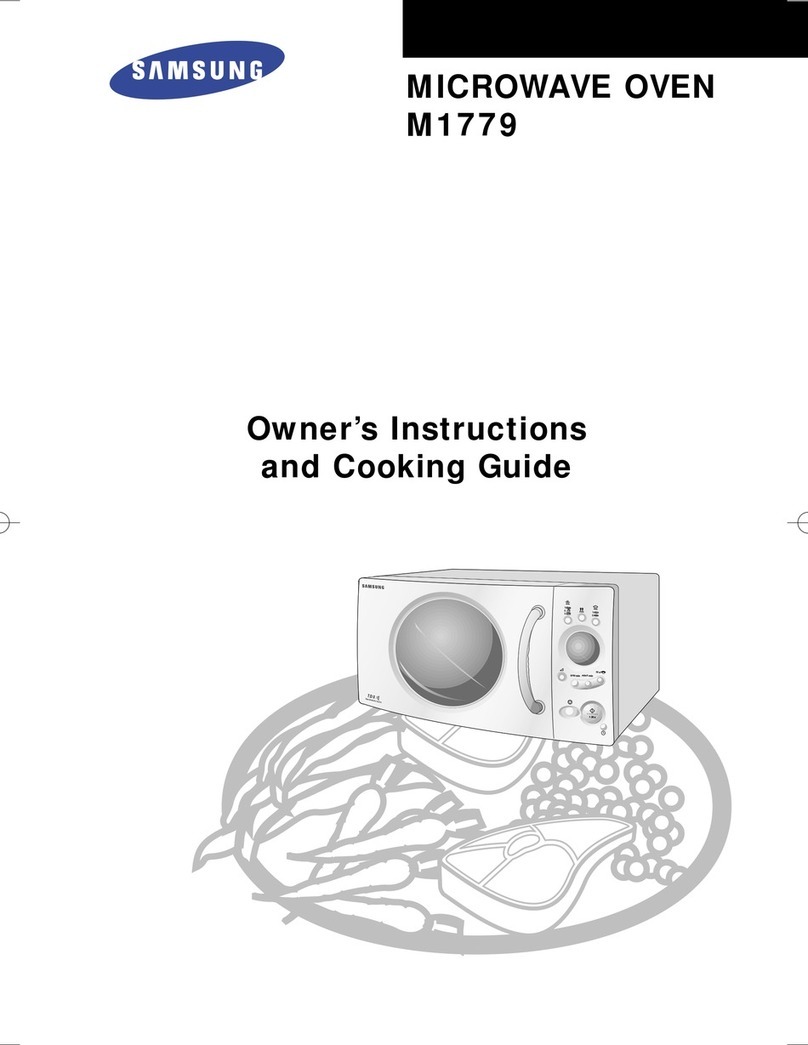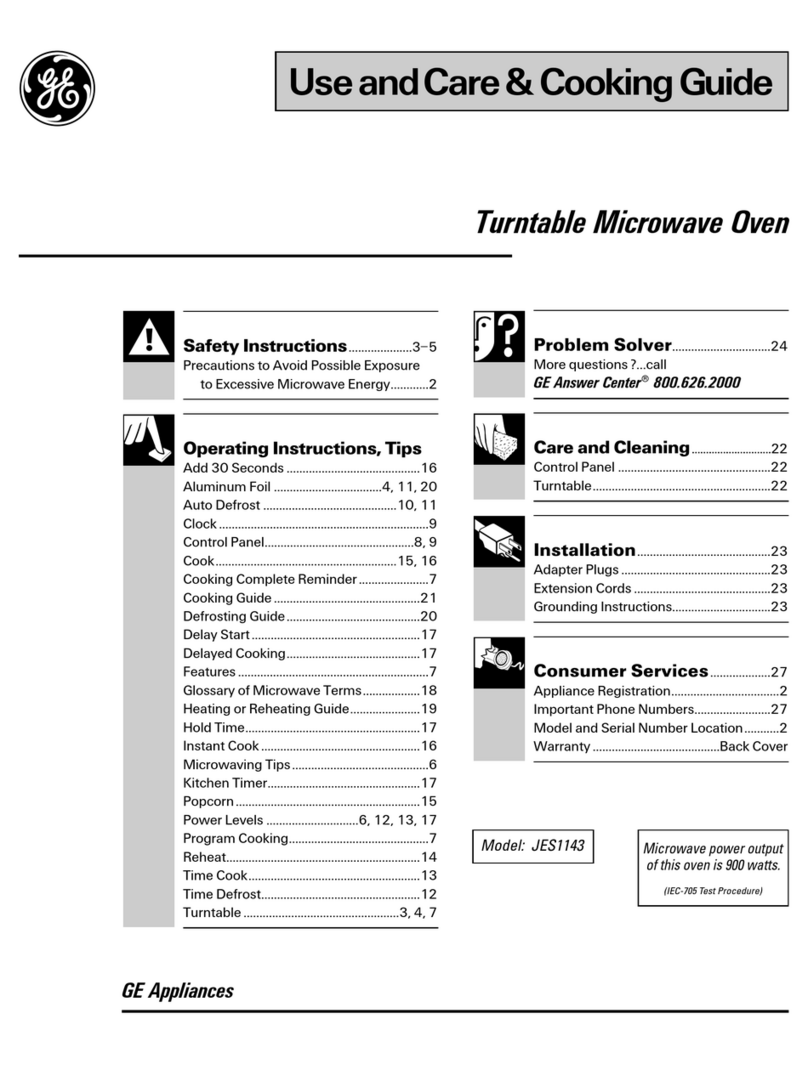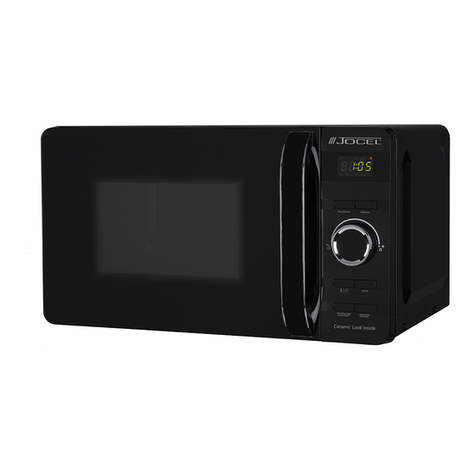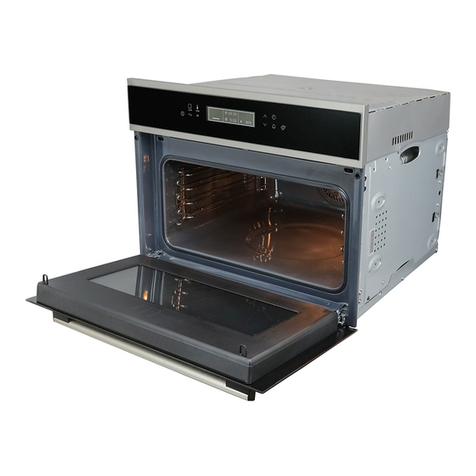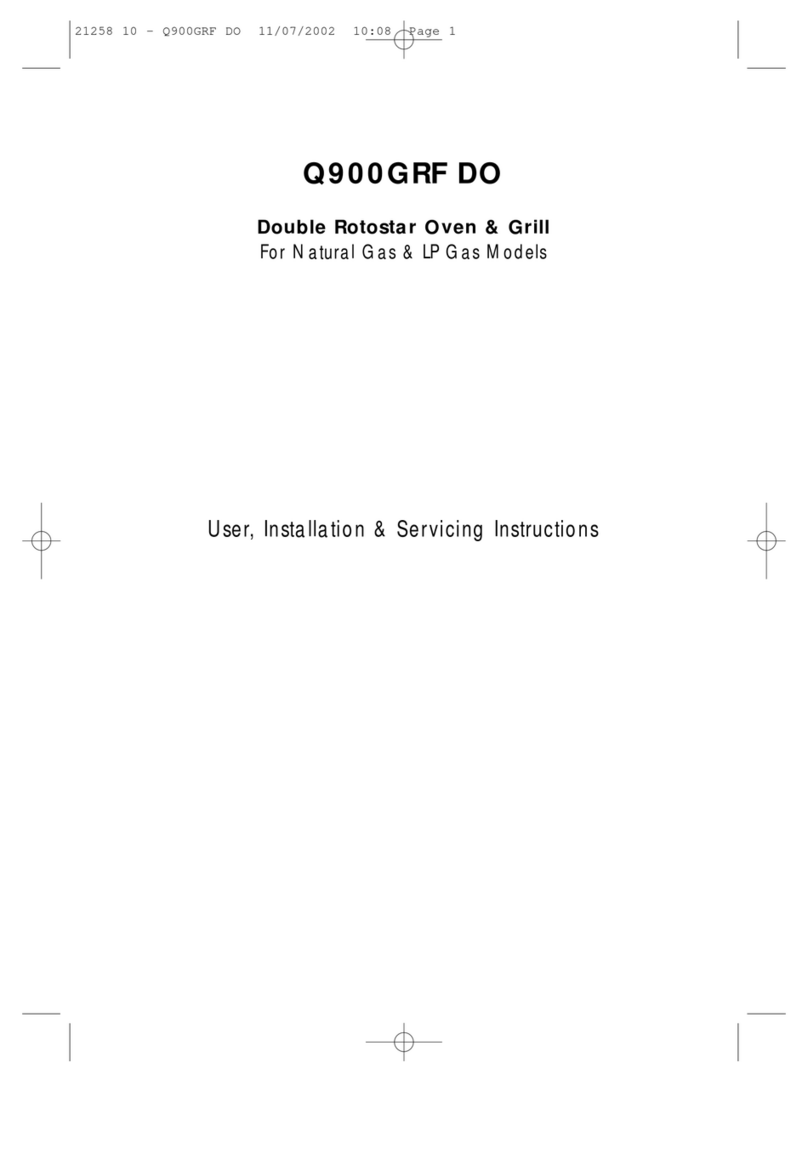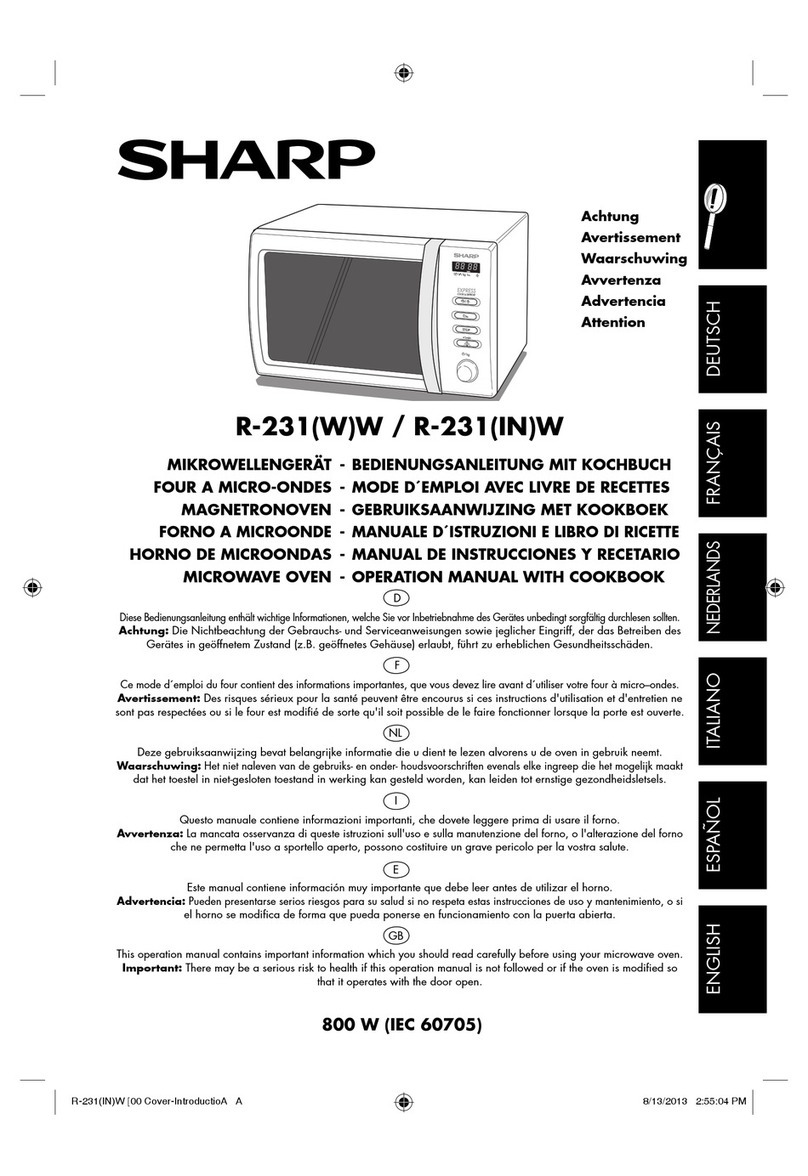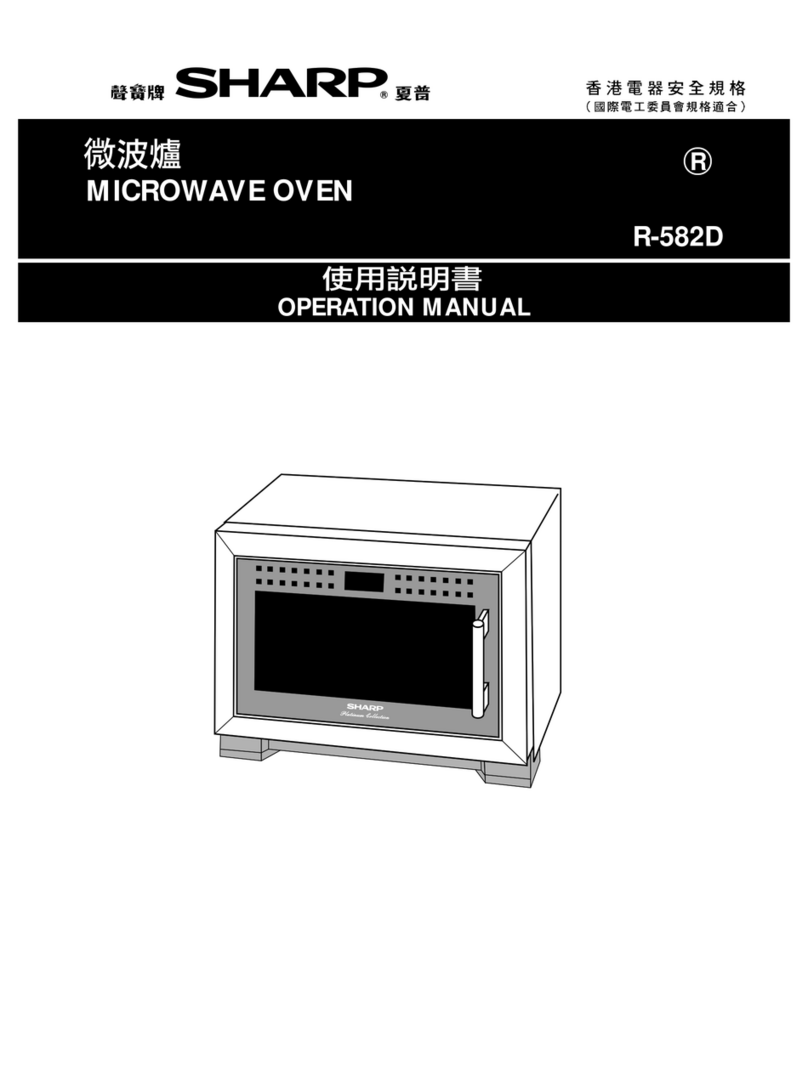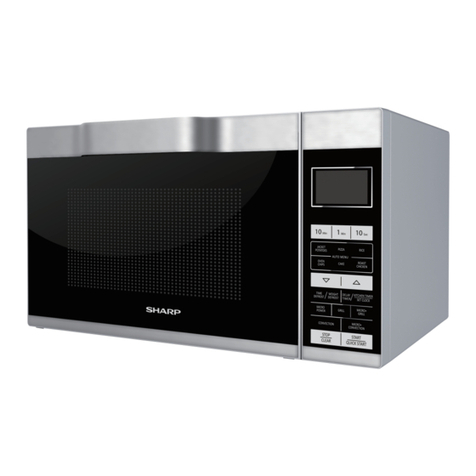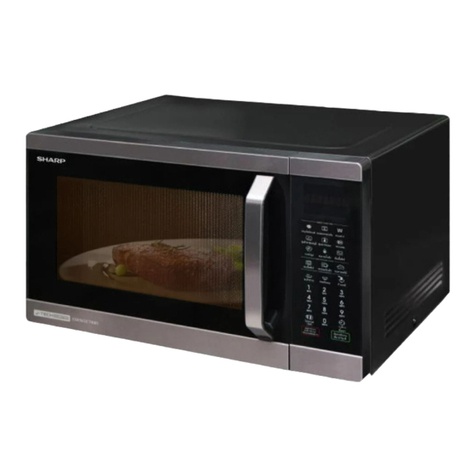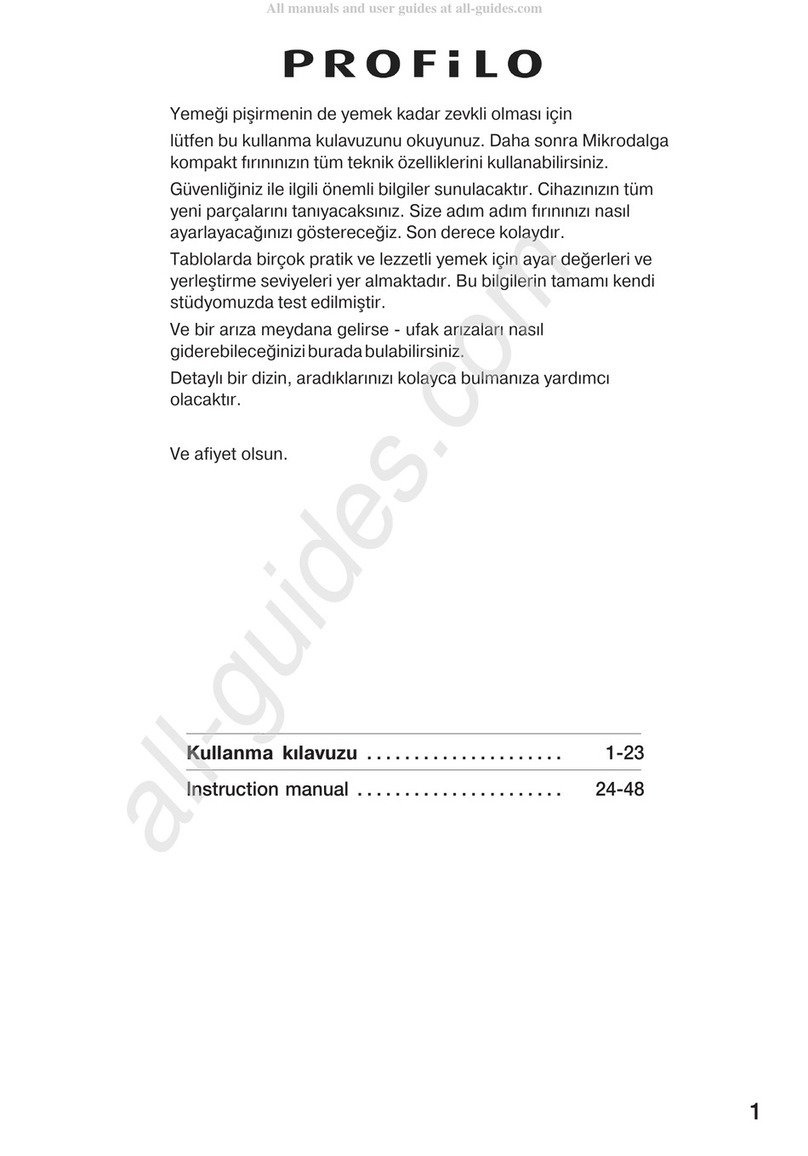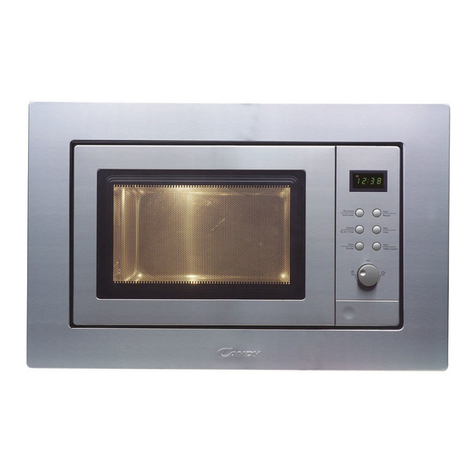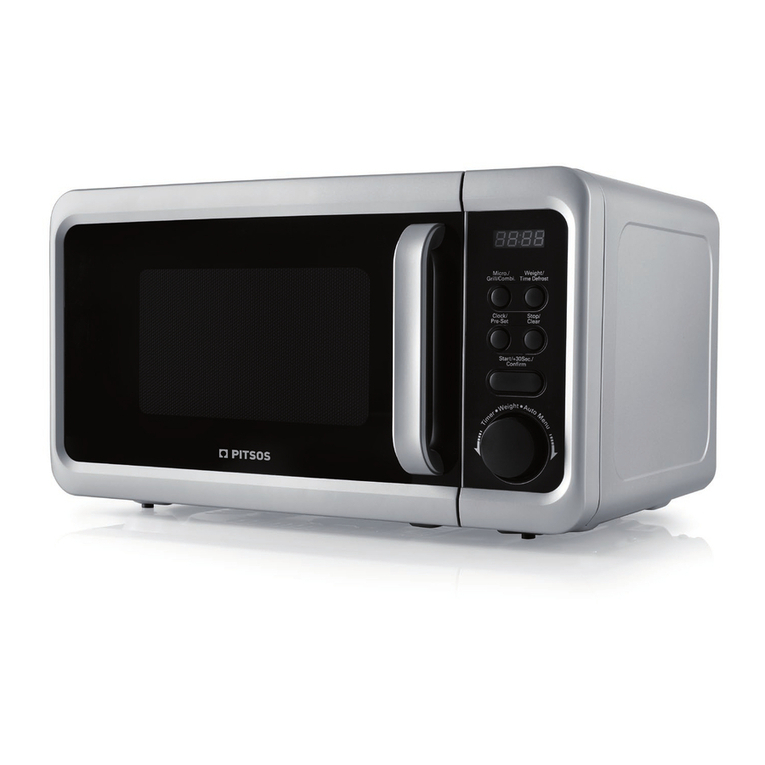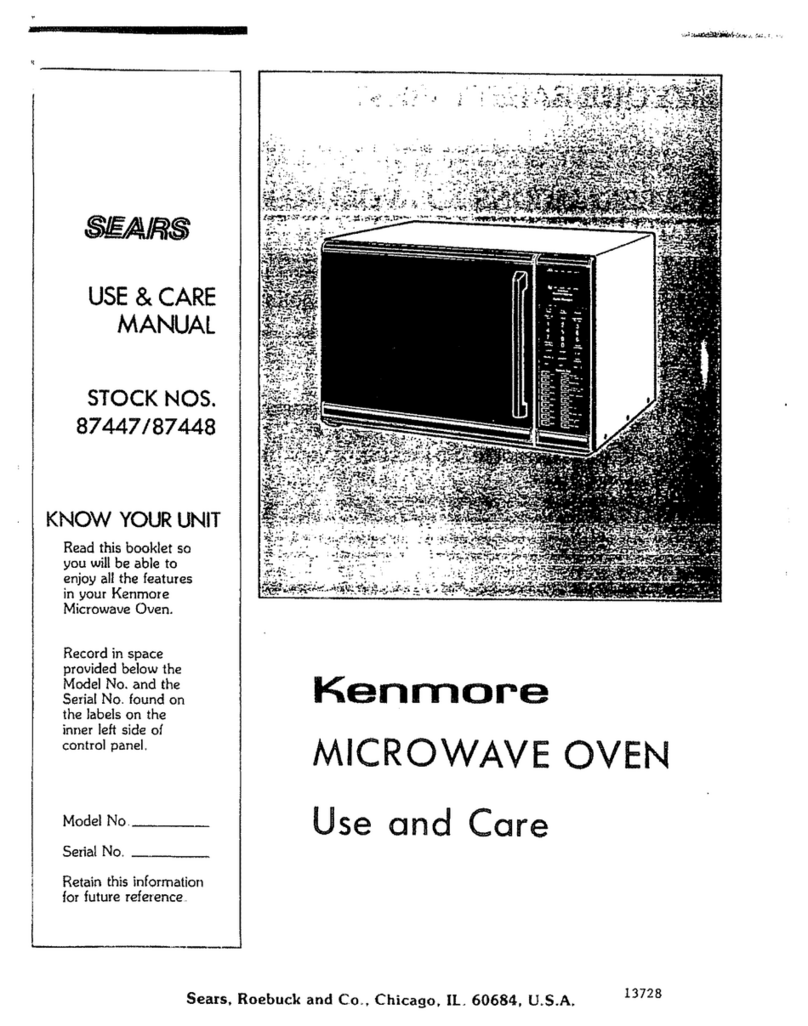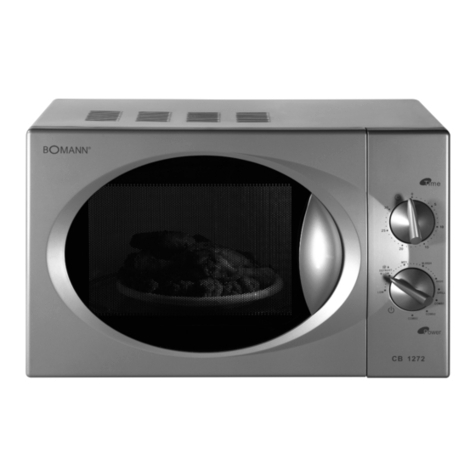
8
Note: The On/Off time ratio does not exactly correspond
to the percentage of microwave power, because
approx. 3 seconds are needed for heating up the
magnetron filament.
GRILL COOKING CONDITION
TOP GRILL (Figure O-3a)
In this condition the food is cooked by the top grill heating
element . Rotate the COOKING MODE dial to GRILL
setting. And enter the desired cooking time by rotating the
TIME/WEIGHT dial. When the START button is pressed,
the following operations occur:
1. The numbers on the digital readout start the count
down to zero.
2. The oven lamp, cooling fan motor and turntable motor
are energized.
3. The relay RY3 is energized and the main supply
voltage is applied to the top grill heating elements.
4. Now, the food is cooked by the top grill heating ele-
ments.
NOTE: The convection cooking condition will be carried
out simultaneously until the temperature of the
oven cavity rise to 220˚C.
CONVECTION COOKING CONDITION
PRE-HEATING (by 40˚C - 130˚C)
Rotate the COOKING MODE dial to the convection
setting. And programme the desired convection tem-
perature of 40˚C - 130˚C by touching CONVECTION
button. When the START button is touched, the following
operations occur:
1. The relays RY1, RY6 and RY7 are energized, the oven
lamp, turntable motor, fan motor and convection motor
are turned on.
2. The relay RY4 is energized and the main supply
voltage is applied to the convection heating element.
3. After the temperature of oven cavity rises to the se-
lected one, the oven will continue to turned the
convection heating element on and off to maintain the
temperature for 30 minutes.
PRE-HEATING (by 160˚C _250˚C)
Rotate the COOKING MODE dial to the convection
setting. And programme the desired convection tem-
perature of 160˚C - 250˚C by touching CONVECTION
button. When the START button is touched, the following
operations occur:
1. The relays RY1, RY6 and RY7 are energized, the oven
lamp, turntable motor, fan motor and convection motor
are turned on.
2. The relay RY4 and RY3 are is energized and the main
supply voltage is applied to the convection heating
element and the grill heating elements.
3. After the temperature of oven cavity rises to the se-
lected one, the oven will continue to turned the
convection heating element on and off to maintain the
temperature for 30 minutes. And simultaneously the
grill heating element will be operated at 10% power
output.
CONVECTION COOKING (by 250˚C)
Rotate the COOKING MODE dial to the convection
setting. And enter the cooking time by rotating the TIME/
WEIGHT dial. And select the desired cooking tempera-
ture 250˚C by pressing the CONVECTION button. When
the START button is pressed, the following operations
occur:
1. The relays RY1, RY6 and RY7 are energized, the oven
lamp, turntable motor, fan motor and convection motor
are turned on.
2. The relay RY4 and RY3 are energized and the main
supply voltage is applied to the convection heating
element and the grill heating element.
3. The oven will continue to turn the convection heating
element on and off to maintain the temperature for the
programmed cooking time. And simultaneously the
grill heating elements will be operated at 10% power
output.
CONVECTION COOKING (by 40˚C _230˚C)
Rotate the COOKING MODE dial to the convection
setting. And enter the cooking time by rotating the TIME/
WEIGHT dial. And select the desired cooking temperature
40˚C - 230˚C by pressing the CONVECTION button.
When the START button is pressed, the following opera-
tions occur:
1. The relays RY1, RY6 and RY7 are energized, the oven
lamp, turntable motor, fan motor and convection motor
are turned on.
2. The relay RY4 is energized and the main supply
voltage is applied to the convection heating element.
3. The oven will continue to turned the convection heating
element on and off to maintain the temperature for the
programmed cooking time.
DUAL COOKING CONDITION
MICROWAVE AND CONVECTION (Figure O-5a)
Rotate the COOKING MODE dial to DUAL 1 setting.
And enter the desired cooking time by rotating the TIME/
WEIGHT dial. And press POWER LEVEL button to set the
desired microwave power. And press the CONVECTION
button to set the cooking temperature. When the START
button is pressed, the following operations occur:
NOTE: The 100% microwave power level can not be
selected.
When the START button is touched, the following opera-
tions occur:
1. The numbers on the digital read-out start the count
down to zero.
2. The oven lamp, fan motor, turntable motor and con-
vection motor are energized.
3. The relay RY4 will be energized and the main supply
voltage is applied to the convection heating element.
4. The relay RY2 is energized and the microwave energy
is generated by magnetron.
5. Now, the food is cooked by microwave and convection
energy simultaneously.
MICROWAVE AND TOP GRILL (Figure O-5b)
Rotate the COOKING MODE dial to DUAL 2 setting.
And enter the desired cooking time by rotating the TIME/
WEIGHT dial. And press POWER LEVEL button to set the
desired microwave power. When the START button is
pressed, the following operations occur:
1. The numbers on the digital read-out start the count
OPERATION SEQUENCE


